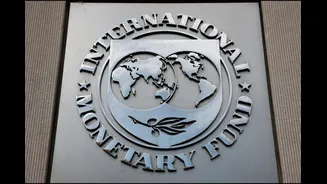Ditching US Debt
The movement by central banks to decrease their holdings in US Treasury bills has become increasingly visible in recent times. This move involves institutions
around the world, who are rethinking their reliance on US debt instruments. Several factors may influence this trend. The first reason might be diversification of currency holdings to reduce risks associated with concentrating assets in a single currency. Concerns regarding the long-term sustainability of US fiscal policy, including growing debt levels, may lead central banks to seek alternative investment options. Geopolitical considerations could also be at play, with some central banks looking to lessen their dependence on assets from particular nations for strategic reasons. This behavior highlights a calculated effort to optimize portfolios and manage risks in the evolving global financial landscape.
Gold's Rising Appeal
Parallel to the reduction in US T-bill holdings, central banks have been expanding their gold reserves, solidifying gold's position as a dependable asset during economic uncertainty. Gold, historically a safe haven, tends to retain its value during periods of economic instability and is seen as a hedge against inflation. This characteristic makes it attractive to central banks seeking to protect their reserves. Several events highlight its appeal, including periods of high inflation or uncertainty in global markets. Buying gold can act as a crucial strategy, allowing central banks to add stability and safeguard against the devaluation of other assets. This proactive approach underscores the importance of gold as an integral component of a balanced and resilient investment strategy for central banks across the globe.
Diversification Motives
Central banks are actively diversifying their reserve holdings as a pivotal strategy to lower the risks linked to any single currency. This diversification strategy helps to safeguard against the effects of currency fluctuations or economic downturns within specific economies. By spreading their investments across a broader range of assets and currencies, central banks can distribute the risk and minimize potential losses. This is particularly crucial in today's unpredictable economic environment. Diversification enables central banks to maintain financial stability and withstand potential disruptions. Such strategies showcase a calculated attempt to construct robust and resilient portfolios capable of enduring various market conditions. This approach illustrates a forward-thinking response to the complexities and uncertainties of global finance.
Geopolitical Impact
Geopolitical factors play a significant role in influencing the investment decisions of central banks. Global political instability and international conflicts can lead central banks to reassess their investment strategies and reallocate their reserves. The desire to decrease dependence on specific nations, mainly for strategic reasons, is also essential. Central banks might decrease their exposure to assets issued by countries involved in geopolitical tensions to mitigate potential risks associated with sanctions, trade disputes, or currency restrictions. The shift in holdings and reserves illustrates a proactive approach to reduce vulnerability. By strategically positioning their assets, central banks seek to navigate the complexities of international relations and safeguard their financial stability, making it a critical aspect of reserve management.
Inflationary Concerns
Inflation is a crucial factor influencing central banks' asset allocation decisions, as it erodes the value of holdings and affects monetary policy. High inflation rates encourage central banks to seek investments that can maintain or increase their value in a high-inflation environment. Gold, which often serves as an inflation hedge, becomes a valuable asset in such scenarios. The strategic investment in gold helps protect against the erosion of purchasing power. During times of heightened inflation, central banks may adjust their reserves to safeguard the overall value. This active approach reflects a proactive strategy to mitigate the negative effects of inflation, allowing them to retain financial stability while dealing with inflationary pressures and the overall economic landscape.
Future Outlooks
The trend of central banks moving away from US T-bills and towards gold is anticipated to influence the global financial landscape. These shifts will probably have effects on currency markets, interest rates, and the value of gold. A sustained decline in demand for US Treasury bills could place upward pressure on US interest rates and possibly impact the dollar's value. An increased demand for gold could boost its price, and it may affect investment strategies and market volatility. The movements by central banks are anticipated to be monitored as investors try to adapt to changes. This underscores the need for adaptable strategies to manage portfolios.













